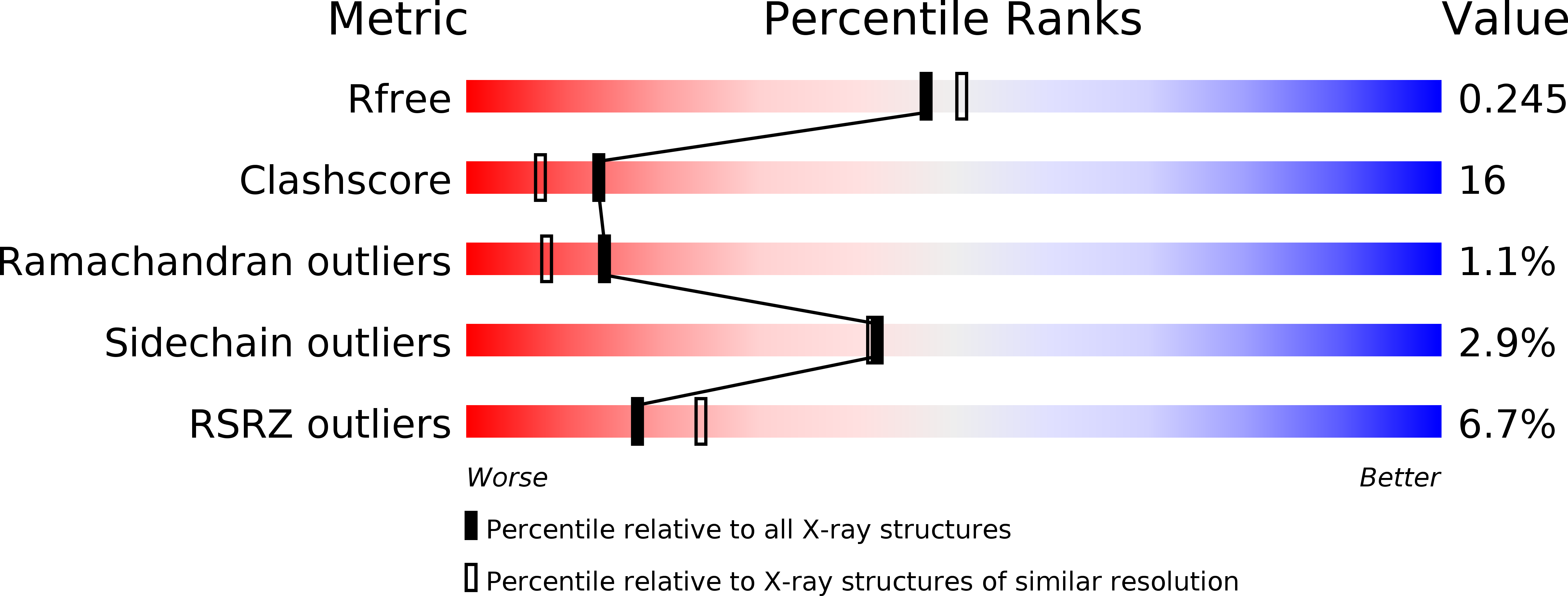
Deposition Date
2006-10-20
Release Date
2006-12-19
Last Version Date
2023-08-30
Entry Detail
PDB ID:
2NM1
Keywords:
Title:
Structure of BoNT/B in complex with its protein receptor
Biological Source:
Source Organism:
Clostridium botulinum (Taxon ID: 1491)
Rattus norvegicus (Taxon ID: 10116)
Rattus norvegicus (Taxon ID: 10116)
Host Organism:
Method Details:
Experimental Method:
Resolution:
2.15 Å
R-Value Free:
0.24
R-Value Work:
0.19
R-Value Observed:
0.19
Space Group:
P 21 21 21


